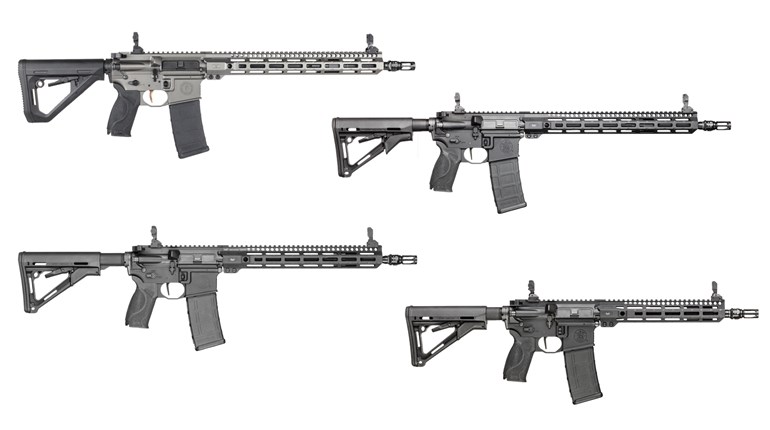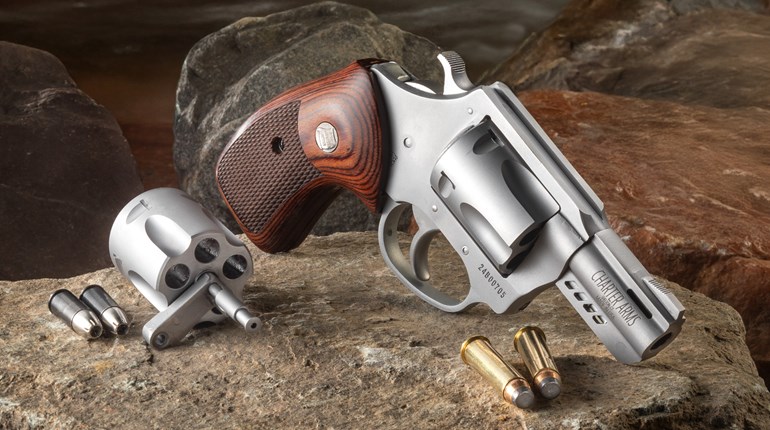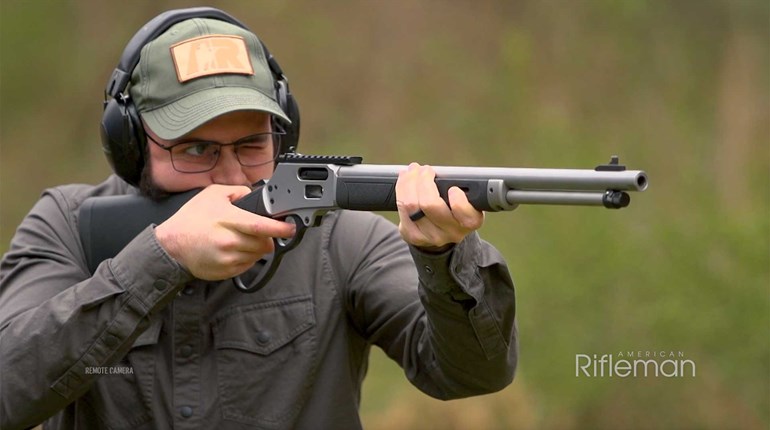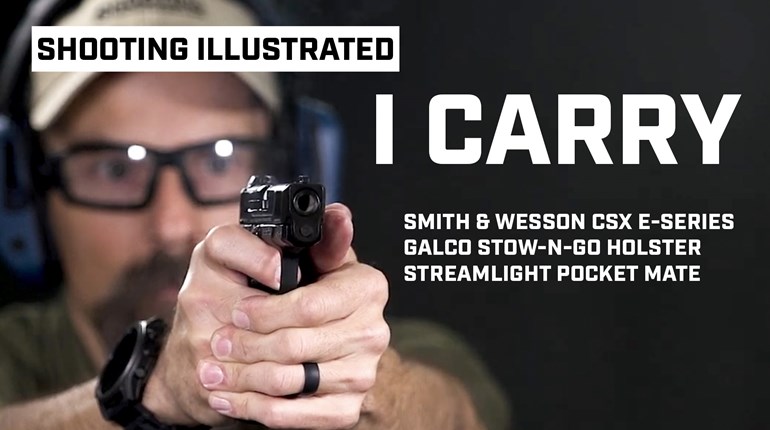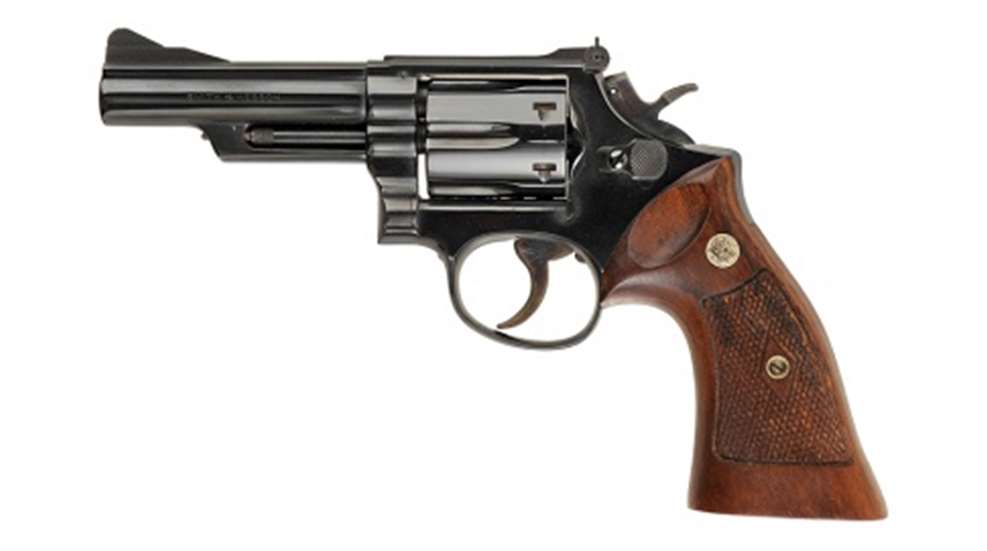
A big, lanky Louisianan, Bill Jordan left the U.S. Border Patrol to serve in World War II as a combat Marine officer. Returning to his previous duty after the war, Jordan saw his share of gun fighting down along the border.
As a lifelong shooter, he worked hard on every aspect of his marksmanship, both combat and sporting. With handgun, rifle and shotgun, Jordan was among the best all-around marksmen this country has ever produced. But a unique skill with the handgun was to put Jordan in the realm of accepted authorities, and ultimately made him an icon among fightin' shooters. He developed impressive skill as a quick-draw artist to such a degree the Border Patrol used him for recruiting exhibitions. His credentials went well beyond trick shooting, but the destruction of aspirin tablets and ping-pong balls put him in the limelight. In short, people began to pay attention to what he said.
Those people included a guy named Carl Hellstrom. An energetic executive trained as an engineer, Hellstrom was the new president of Smith & Wesson. In that immediate post-World War II era, the old company was in trouble. The factory was worn out, and so was much of its equipment. Worse yet, the product line was hopelessly antiquated. Hellstrom launched a modernization program that gave birth to such Smith & Wesson classics as the Model 29, Model 39 and Model 41, as well as a new factory.
Hellstrom also went to major shooting matches and talked to competitive shooters about what they needed. The result was a vastly improved revolver line, as well as the legendary Model 52. But, the big money was in law enforcement agencies. All over the nation, they needed new handguns, and the odds-on favorite was the DA/SA revolver. Hellstrom looked up Jordan and asked him for his ideas for an ideal police revolver.
Jordan wasn't bashful about his preferences. Smith & Wesson was manufacturing its .357 Mag. revolver on the big N-frame and had been doing so since 1935. It was an immensely powerful and popular revolver, but it was heavy. Jordan asked for a .357 Mag. wheelgun built on the medium-sized K-frame, featuring adjustable target sights and a 4-inch barrel. He wanted it to be of the same general shape as the new Model 29, scaled down for the smaller caliber and frame. This required some engineering—both mechanical and metallurgic—to accomplish.
In short order, it was done and Jordan had his new duty gun. Not long after, a lot of other guys with badges had a handgun destined to be a classic. At first, the revolver was named the Combat Magnum; however, in 1957 Smith & Wesson began using numerical designations for all of its models and the Combat Magnum became the Model 19.
Those early 19s were pretty handsome wheelguns. They came with a highly polished blue finish, walnut target stocks and often the red-ramp front, white-outline rear sights. When Jordan went on ABC's "You Asked For It" with his new revolver and pronounced it "the answer to a policeman's prayer," the Model 19's future was sealed. Within a few months of its introduction, the flashy new medium-size magnum was the single most popular handgun for uniformed police service. Then, Smith & Wesson introduced a 2.5-inch, round-butt version of the gun for plainclothes or concealed-carry work. All told, the Model 19 was manufactured in Smith & Wesson's Springfield plant until it was discontinued in 1999—a production run of 45 years.
I had my first Model 19 before I left the Marine Corps; it came out of the PX at Camp Pendleton. Naturally, it was the first service revolver I carried when I went to work for the Sheriff's Office in Orange County. It was on my hip every day until the early 1970s, when I finally found a Model 66 to replace it. (The Model 66 is a stainless steel, line-for-line rendering of the Model 19.) While policemen all over the country "used" their 19s in the sense of firing them in the course of their duties, I never had to. Although, I do have a recollection of a day when I came close to calling on not one, but two, Model 19s.
Chris Weare, my perennial partner in one kind of escapade or another, and I were in San Francisco to pick up a couple of bad guys from a big-time gang of jewel thieves. We were warned to be prepared for anything. In a hotel room, we had our arsenal out on one of the beds, making sure all was ready for the events of the following day. Then came an assertive knock on the door. There was absolutely no reason for anyone to be knocking on our door near midnight. More knocking followed. Chris grabbed a gun in each hand and proned out around the corner of a bed. I took two of mine—a 2.5-inch and a 4-inch—and went to the door. On the count of three, I jerked the door open and slid backward to a position around the corner of the bathroom door.
The innocent civilian in search of the ice machine nearly had a coronary, so we reassured him his life was in no danger, the incident must not be discussed, we were professionals, etc. However, if he had really been a bad guy, it would have been consistent with what type of guns were being pointed at crooks—I had two Model 19s, and Chris had one (and a Colt Commander). Three out of the four guns were Smith & Wesson Model 19s, the "answer to a policeman's prayer" and the most popular hunk of 1970s fightin' iron.












